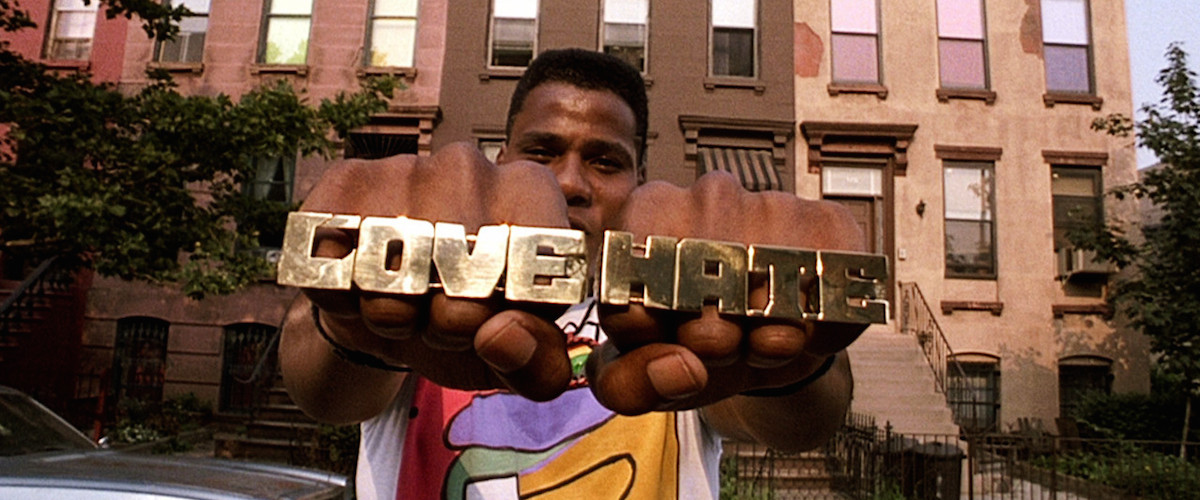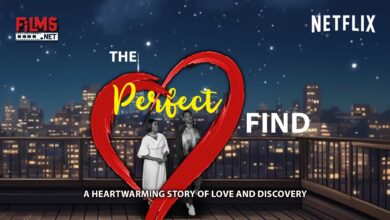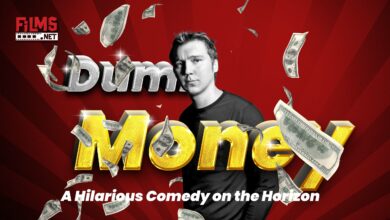Spike Lee’s ‘Do the Right Thing: The Original Storyboard

Spike Lee’s ‘Do the Right Thing:
In 1989, Spike Lee’s Do the Right Thing was released, and it quickly became one of the most iconic films of its time. The story follows a group of people living in the Brooklyn neighborhood of Bed-Stuy during a long hot summer day as tensions and emotions flare. Lee’s best works and is still highly regarded today for their provocative themes about race relations.
But many do not know that before Do the Right Thing was made into a movie, it started with an idea on a storyboard. This blog post will look at how the original storyboard for Do the Right Thing came to life and how it became an award-winning movie.
What is ‘Do the Right Thing’?
Spike Lee’s Do the Right Thing is a 1989 American independent film directed by, written by, and starring Lee. The film examines race relations in New York City during the hot summer of 1989. The title refers to the theme of doing what is morally correct despite external pressures.
The storyline revolves around a black neighborhood in Brooklyn that becomes increasingly gentrified. Tensions between different ethnic groups living in the area come to a head. That leads to a tragic incident that forces everyone to confront their prejudices and biases.
Do the Right Thing was groundbreaking for its honest portrayal of race relations in America. It received critical acclaim and won several awards, including an Academy Award nomination for Best Original Screenplay. The film remains relevant today as a powerful commentary on social injustice and racism.
The story of how ‘Do the Right Thing’ came to be
When Spike Lee was starting as a filmmaker, he had the idea for a movie about race relations in Brooklyn. He pitched the idea to several Hollywood studios, but they all turned him down. Undeterred, Lee decided to finance the movie himself.
He raised money by selling his personal belongings and maxing out his credit cards. He also convinced his father, a successful jazz musician, to invest in the project. With the money he raised, Lee could hire a cast and crew and begin filming.
“Do the Right Thing” was not an easy movie to make. There were several disagreements between Lee and his cast and crew. But in the end, everyone pulled together to create a powerful and timeless film about race relations in America.
The original storyboard for ‘Do the Right Thing.’
The original storyboard for Spike Lee’s “Do the Right Thing” is a fascinating look at the director’s creative process. The storyboard is a series of drawings that depict each scene in the film. Moreover, Lee puts much thought into the film’s visual style. The storyboard is also interesting because it shows how the film’s plot changed during editing.
For example, one scene made to be in the film was cut during editing. This scene would have shown Mookie (played by Lee) throwing a trash can through the window of Sal’s pizzeria. However, Lee cuts this scene because he feels it can destroy. Plus, it will not fit with the film’s overall message.
What Spike Lee had to say about the film
In a recent interview with The New York Times, Spike Lee discussed his iconic film Do the Right Thing. When asked about the film’s lasting impact, Lee said: “I’m always happy when people say they’re still affected by the film. Because it is our intention—to make a movie that would last. It’s not just a time capsule in Brooklyn in the ’80s. It deals with universal themes that are still relevant today.”
Lee discussed how he feels the film is especially relevant in the current political climate. “With what’s going on now in America, with Trump and all of his bigotry, I think people are looking for a way to express themselves,” he said. “I think that’s one of the reasons why many people see my film much now.”
When asked how he would update the film for a modern audience, Lee said he wouldn’t change much. “The human dynamics haven’t changed that much,” he said. “We’re still fighting over the same things.”
How the film has aged
It’s been 30 years since Spike Lee’s “Do the Right Thing” was released, and the film feels as relevant as ever. The story of racial tensions boiling over on a hot summer day in Brooklyn is as timely as ever, with recent events like the death of George Floyd still fresh in our minds.
The film has aged remarkably well, thanks to its strong writing and performances. The characters feel real and fully fleshed out, and their interactions are believable. Despite the heavy subject matter, the film’s humor also helps to lighten the mood. Overall, “Do the Right Thing” is a timeless classic that resonates with audiences today.
How did Spike Lee come up with the idea for the storyboard?
Spike Lee had the idea for the storyboard while working on his film School Daze. He was looking for a way to visualize the movie’s script and came up with the idea of using a comic book format. Lee took his storyboard to film producer Peter Guber, who loved the idea and agreed to finance the project.
What are some of the key scenes in the storyboard?
Some of the key scenes in the storyboard are:
- In the opening scene, Mookie throws a trash can lid at a car.
- The scene where Buggin’ Out gets into an argument with Pino over his right to sit in the “white section” of the pizzeria.
- It is the scene where Radio Raheem gets choked to death by the police.
- The scene where Mookie throws a garbage can through the window of Sal’s pizzeria.
- In the final scene, everyone is standing around discussing what happened and what it all means.
The film’s plot and characters
Spike Lee’s “Do the Right Thing” is a searing examination of race relations in America, set during a hot summer day in the Bedford-Stuyvesant neighborhood of Brooklyn. The film follows interracial interactions between black and Italian-American residents of the block as tempers flare and violence erupts.
The film’s plot centers around Mookie (played by Lee), a black man who works at Sal’s Pizzeria, owned by an Italian-American man named Sal (played by Danny Aiello). Mookie is friends with Sal and his son Pino (played by John Turturro), but tensions between the black and Italian residents of the neighborhood rise. When Mookie finds himself trapped in the middle, he must choose between standing up for his community or staying loyal to his friends.
The film’s characters are richly drawn and complex. In addition to Mookie, Sal, and Pino, we meet Da Mayor (played by Ossie Davis), Mother Sister (played by Ruby Dee), Radio Raheem (played by Bill Nunn), Smiley (played by Giancarlo Esposito), and many others. Each character has a unique perspective on race relations. Lee uses them to paint a multi-faceted portrait of America’s racial divide.
The film’s shooting locations
- The film’s shooting locations were in New York City, specifically the Bedford-Stuyvesant neighborhood of Brooklyn.
- The film was shot on location over 30 days in the summer of 1988. The budget for the film was $6 million.
The film’s use of color
In “Do the Right Thing,” Spike Lee uses color greatly. The film is set during a hot summer day in Brooklyn. Moreover, the use of warm colors helps create an oppressive, tense atmosphere. The bright reds and yellows of the neighborhood businesses contrast sharply with the cool blues and greens of the NYPD cruiser that drives through at the beginning of the film.
Lee also uses color to symbolize race relations in the film. The characters Mookie and Radio Raheem wears brightly colored clothes, while most of the white characters dress in more subdued tones. This visually represents the divide between black and white communities in Brooklyn.
The use of color in “Do the Right Thing” is one of its most striking aspects and helps create a unique visual experience.
The Film’s Music
Regarding the music in Spike Lee’s “Do the Right Thing,” there are two main schools of thought. On the one hand, you have those who believe that music is an essential part of the film, helping to set the tone and atmosphere of the neighborhood. On the other hand, you have those who believe that the music is too loud and intrusive, taking away from the film’s realism.
I fell somewhere in between these two camps. I think that the music is important to the film, but I also think that it could have been used a bit more sparingly. In particular, Public Enemy’s “Fight the Power” represents too much throughout the film. That being said, I think it’s a great song, and it works in the context of the film.
In terms of other songs used in the film, I think they’re all pretty effective. Billie Holiday’s “Strange Fruit” shows great effect during Radio Raheem’s death scene. Stevie Wonder’s “They Won’t Go When I Go” perfectly captures Mookie’s emotional state as he contemplates whether or not to throw a trash can through Sal’s window.
The film’s impact on popular culture
When “Do the Right Thing” was released in 1989, many praised it for its accurate and nuanced portrayal many praised itAmerica. The film was also controversial, with some arguing that it promoted violence. However, there is no denying that “Do the Right Thing” significantly impacted popular culture.
The film has been credited with significantly impacting mainstream films. Before “Do the Right Thing,” hip-hop was mostly associated with underground culture. However, the film’s use of hip-hop helped to make it more mainstream. The film’s soundtrack gets high regard and features some of the biggest names in hip-hop, including Public Enemy and Queen Latifah.
“Do the Right Thing” also helped to increase awareness of racism and police brutality. The film’s depiction of these issues sparked conversations about addressing them in real life. In the years since the film’s release, many protests and movements started against police brutality and racism, which represents “Do the Right Thing.”
The original storyboard for the film
When director Spike Lee first conceived his now-classic film “Do the Right Thing,” he created a detailed storyboard to visualize the movie. The storyboard recently revealed in Lee’s Kickstarter campaign for his new film “Da Blood of Jesus” is a fascinating look into the filmmaker’s process.
The original storyboard for the film is a series of drawings that depict key scenes from the movie. Each drawing represents Lee’s handwritten notes, which provide insight into his thought process as he planned the film.
What’s especially interesting about the storyboard is how closely it resembles the final product. Many of the shots and scenes that Lee envisioned in his early planning stages made it into the finished film, making it clear that he had a strong vision for what he wanted to achieve with this movie.
While the storyboard doesn’t necessarily reveal any major surprises about “Do the Right Thing,” it does offer a fascinating glimpse into Spike Lee’s creative process. It’s an essential piece of history for any fan of this classic film.
The Final Thoughts
Spike Lee’s “Do the Right Thing” is an iconic film that has influenced generations of filmmakers. Through this article, we gained insight into how Spike envisioned the movie in its early stages by exploring its storyboard. We glimpse how he captured such an important moment and delivered it so effectively through his imagery and symbolism. We can only be thankful for his contribution, which inspires us today.



